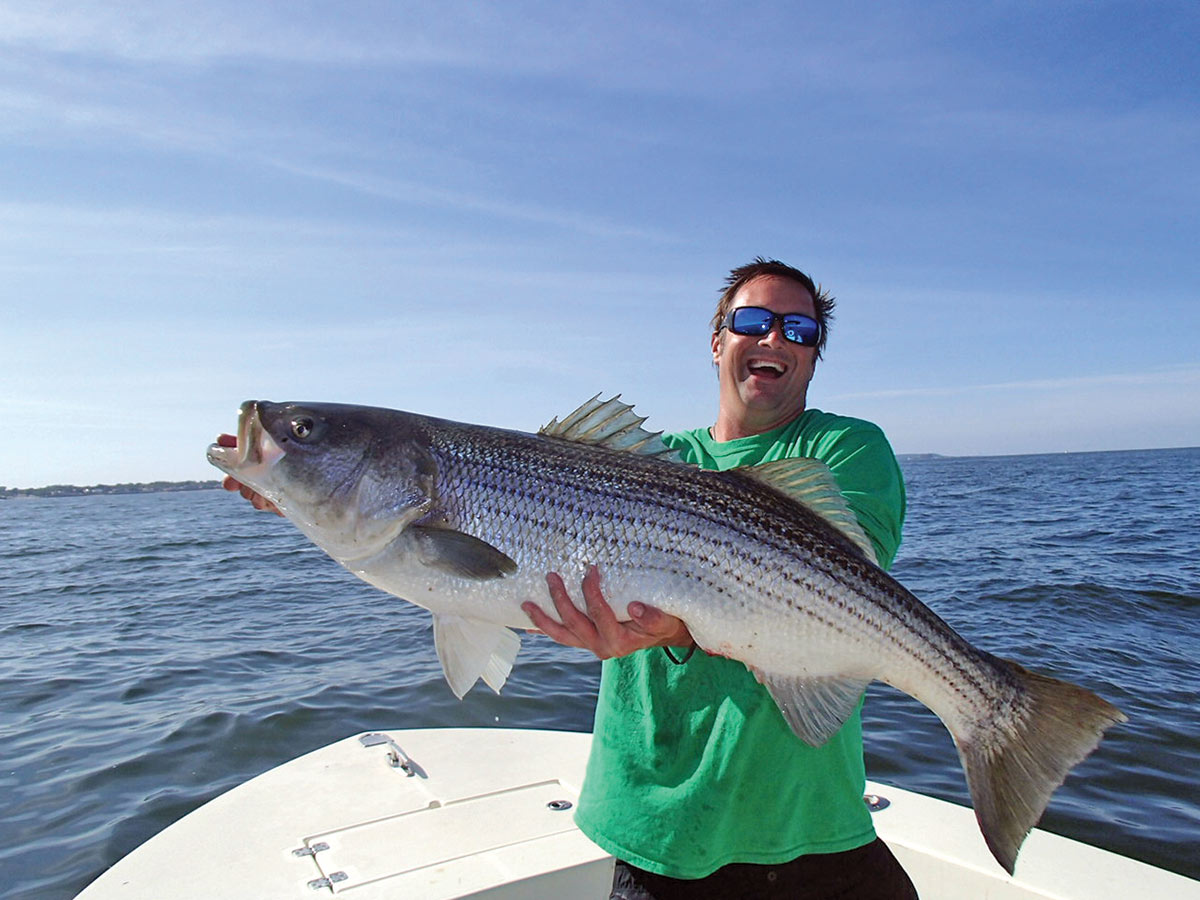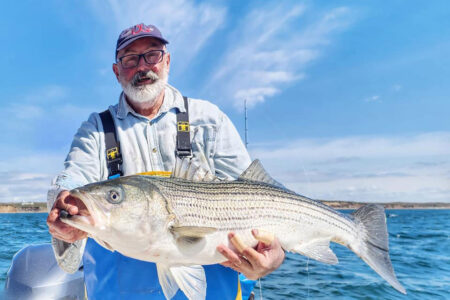
It’s no secret that the striped bass fishery was probably near its historical high in the 2000s when everybody and their mom was catching fish. Ten or twenty years prior to that, you really had to work to find some success. With the influx of thousands of new anglers into the sport, sometimes newfound excitement gets the best of everybody. Now with the noted downward trend on the striper stocks – particularly the bigger fish – there’s no more important time than now to institute and practice proper catch and release tactics that will ensure the fish survives.
SCALE GEAR TO THE SIZE OF FISH – Light tackle and fly casting is fun, but not at the expense of the life of the fish you’re targeting. Minimize the time you play out a bass. Schoolie bass are fun on 9-weight fly rods, but if targeting lunkers, go up to 11-weight rods. In general, don’t target 30-pound bass with light tackle 6-foot spinning rods and 4000 reels. Scale your gear to the fish you plan to target; 40-pound bass demand 30- to 50-pound gear.
BAIT AND SWITCH – While the ol’ snag and drop tactic on bunker schools has become a common technique, the weighted treble hook that hooks the bunker is not conducive to supporting the health of the bass if swallowed. Once snagged, reel in your bunker and transfer to another outfit rigged with a 10/0 circle hook for livelining. The same goes for any chunking you do. Always use circle hooks when bait fishing bass. Gut hooked fish with a weighted treble don’t stand a good chance of survival. (By law, in-line circle hooks are mandatory when bait fishing for striped bass)
HOOK CHANGE – A change that can be even more important is to switch out treble hooks on trolled offerings and casting plugs and change out to siwash single hooks. The three treble hooks on some plugs are overkill as most times the other trebles are sinking into the body of the fish while the main treble can easily rip up the jaw of the bass. If anything, remove the back treble and keep the front one as bass tend to attack baits from the head anyway.
NET JOB – Use a wide-mouthed rubber mesh net to prevent scraping off any protective slime from the fish. The rubber mesh also prevents ripping up the dorsal fin when the fish is flopping around. If you are sans net, bend over the gunwale with a pair of pliers to dislodge the hook and release the fish at boatside. Obviously, no gaff shots anytime when landing bass. If fishing in the surf, walk down and meet the fish in the wash to avoid any instances of dragging the fish over dry sand, which can scrape off the protective slime covering.
TIME IS OF THE ESSENCE – When putting the fish on deck, immediately unhook the fish and prepare for the release, keeping the bass out of the water no longer than 30 seconds. Time is of the essence when protecting the life of a bass you plan to release. If you are taking photos, do so quickly. If that fish is out of the water for more than a minute, it has a lessened chance of survival.
PROPER HANDLING – If you do take any snapshots, hold the fish horizontally, using one hand clamped on the jaw – not in the gills – and use the other hand to support underneath the belly. Do not hold a fish vertical as the weight has strain on all the fish backbone.
RELEASE – Upon releasing a bigger fish, hold the fish by the bottom jaw and put it in the water parallel to the boat. Let the water rush through the gills of the bass to properly re-oxygenate it. Once the fish is ready to split, he will headshake your fingers out of his mouth and power thrust with his tail away and down from the boat. If surf fishing, bring the bass back down into the surf. Tired fish can be revived with the angler standing knee deep in the water to help guide the fish back out past the breakers.
NO PUNTING – I know it goes without saying, but it needs to be said. In the surf, no punting or tomahawking fish back into the ocean! I swear I want to smack anyone in the head that I see flipping bass with their boots back into the surf. For sure, if the battle didn’t wear them down, the punt will most assuredly ding them up and possibly even kill them.
Incorporate these tactics anytime you’re striper fishing so we can all help protect the stocks for future generations.



